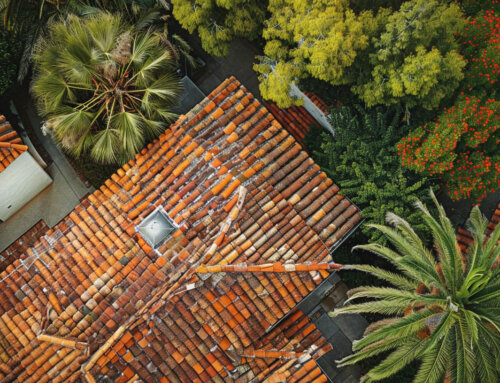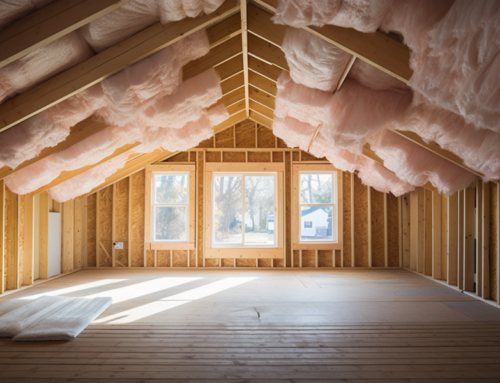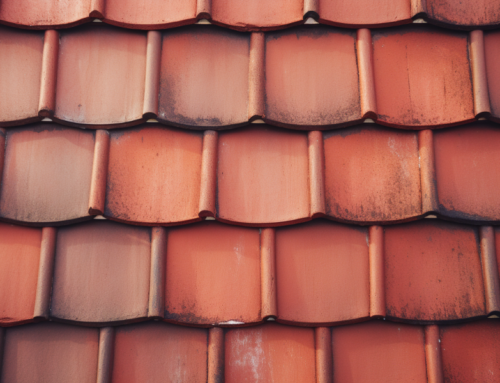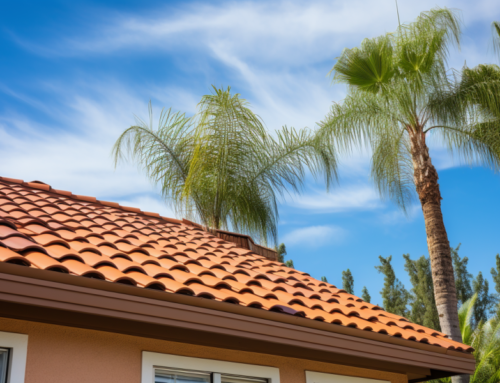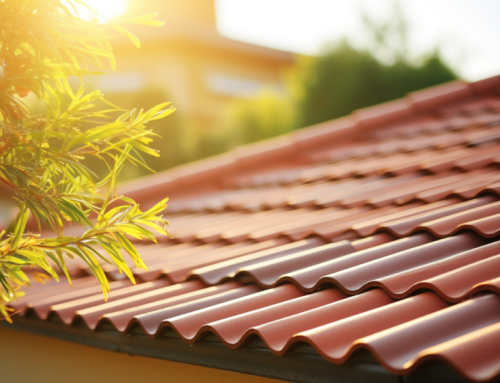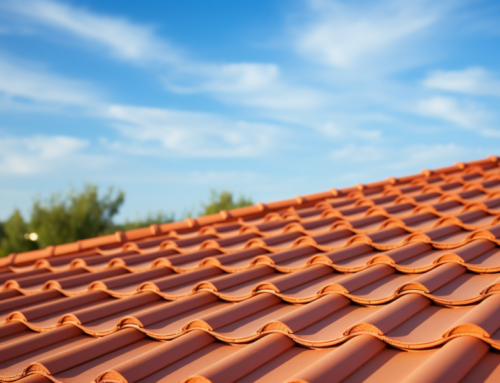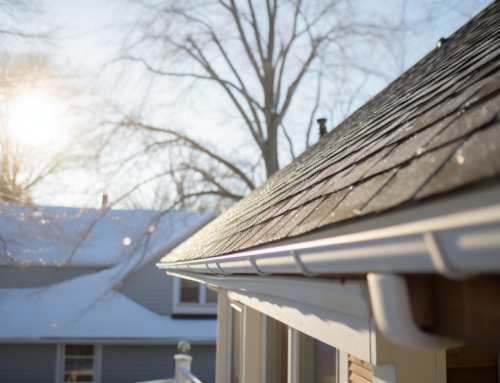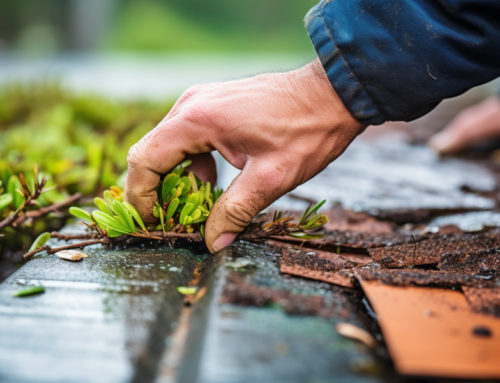
Key Highlights
- The average lifespan of a traditional asphalt shingle roof in California is 17 years, but it can vary depending on factors such as installation quality, shingle type, and local climate conditions.
- California’s climate, with its harsh weather conditions and intense sunlight, can accelerate the degradation of roofing materials and shorten the lifespan of a roof.
- Coastal areas in California, with their high salt content in the sea air, can also contribute to the wear and tear of roofing materials, particularly metal roofs and concrete tiles.
- Factors such as the quality of installation, roof slope, and regular maintenance can also affect the lifespan of a roof in California.
- Regular inspections and prompt repairs can help identify and address minor issues before they escalate into major problems, extending the lifespan of a roof beyond the average expectancy.
Let’s get started on your roofing project!
To get started with a free estimate and consultation, fill out the form below.

Introduction
California’s unique climate poses challenges to roofing. Understanding the impact of weather conditions on roof longevity is crucial for homeowners. Factors like sun exposure and coastal salinity can significantly affect the lifespan of different roofing materials. Regular maintenance and timely roof replacement are vital for protecting your home. In this guide, we explore key indicators that signal the need for roof replacement, preventative maintenance strategies, innovative roofing solutions, and essential considerations for a successful roof replacement project in California.
Understanding the California Climate and Its Impact on Roofing
California’s climate significantly affects roofing longevity. With high temperatures and direct sunlight, roofs endure intense weather conditions. Coastal areas face additional challenges from salt exposure, shortening roof lifespan. Understanding these factors is crucial in choosing roofing materials tailored to California’s climate, optimizing durability and performance. Proper maintenance, including regular inspections, is essential to extend the life of your roof in this demanding environment. Selecting quality materials and professional installation help mitigate the impact of California’s harsh weather on your roof.
The Effects of Sun Exposure on Different Roofing Materials
Excessive sun exposure in California can significantly impact various roofing materials. Asphalt shingles may experience accelerated deterioration, leading to cracking and discoloration. Metal roofs might become hot, increasing energy costs due to heat absorption. Tile roofing, while durable, can fade and weaken under constant direct sunlight. Proper maintenance and choosing high-quality materials are essential to combat the effects of the sun and prolong the lifespan of your roof in the sunny California climate.
How Coastal Salinity Can Shorten Roof Lifespan
Coastal salinity in California can significantly reduce the lifespan of roofs, especially those near the ocean. The salt-laden air can corrode metal components, leading to accelerated deterioration of roofing materials. This exposure to salt can compromise the structural integrity of the roof, making it prone to leaks and other damages. Homeowners in coastal areas should be vigilant in monitoring their roofs for signs of salt damage and consider protective measures to prolong their roof’s lifespan in such harsh environments. San Diego County Roofing recommends regular inspections and maintenance to combat the effects of coastal salinity on roofs in California.
In San Diego County, the typical lifespan of roofing materials varies based on the type of material used. Asphalt shingle roofs, commonly seen in the area, usually last around 15-20 years due to the moderate climate. For those opting for tile roofs, which are popular for their durability and aesthetic appeal, the lifespan can extend to 50 years or more with proper maintenance. Metal roofs, another choice for homeowners, generally have a lifespan of 40-70 years, making them a long-term investment in this region. San Diego County Roofing emphasizes the importance of choosing durable roofing materials to withstand the unique challenges of the California climate.
Durability of Asphalt Shingles in California Weather
Asphalt shingles are a popular roofing material due to their durability in California’s varying weather conditions. The intense sun exposure and occasional rain can impact the longevity of asphalt roofs. These shingles are designed to withstand high temperatures and UV rays, making them a reliable choice for homes in Southern California. Proper maintenance and regular inspections by a professional roofer can help extend the lifespan of asphalt shingle roofs, ensuring they provide effective protection for years to come.
Pros and Cons of Tile Roofing in Coastal Areas
Tile roofing in coastal areas offers durability against saltwater exposure but can be costly initially. The pros include longevity, resistance to pests, and fire-retardant properties. However, the heavy weight of tile roofs may require additional structural support and can be challenging to install. While they provide excellent insulation, maintenance costs could be higher compared to other roofing materials. Considering the coastal climate, proper installation by a professional roofer is crucial for maximizing the benefits of tile roofing.
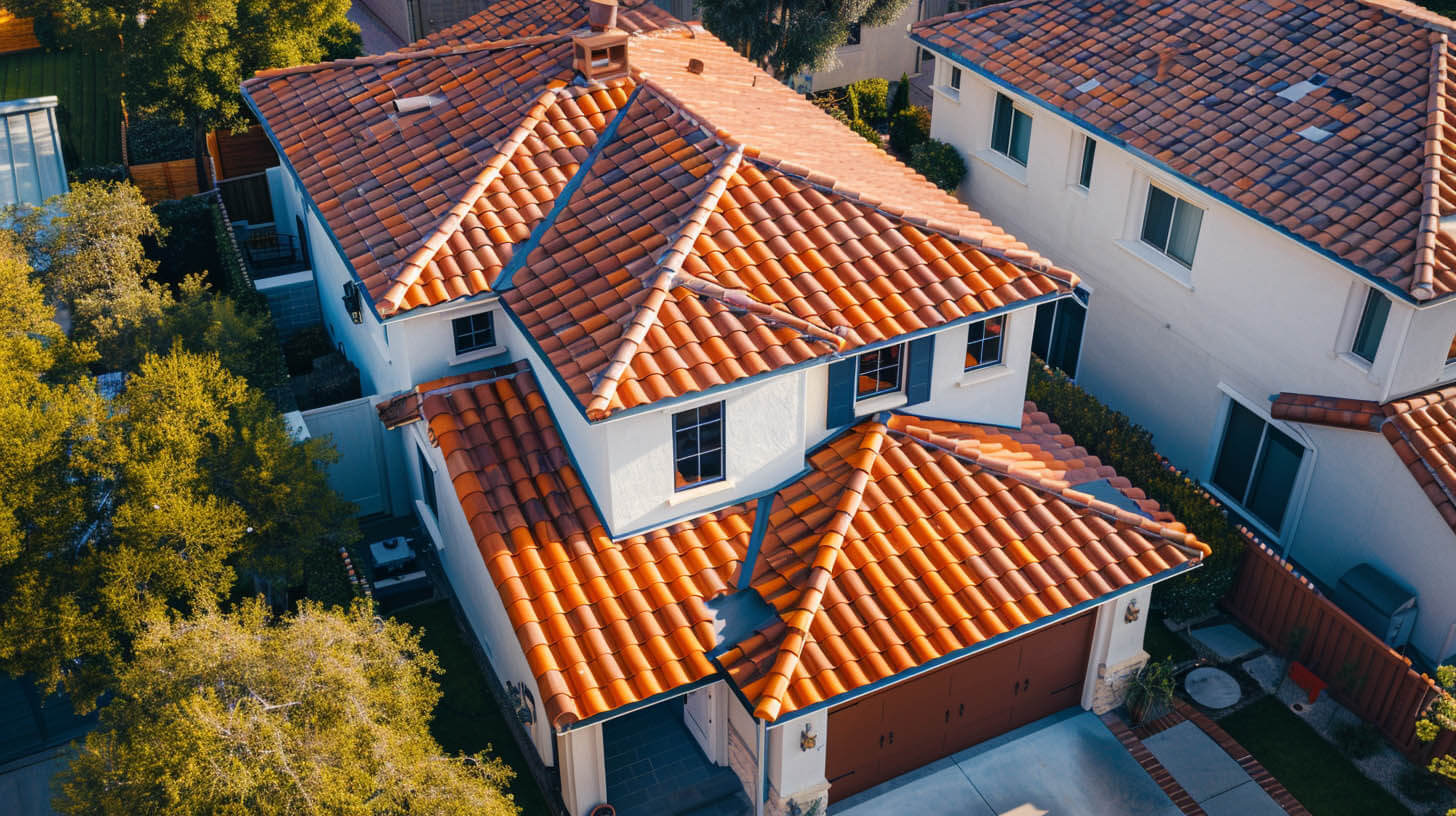
Key Indicators Your Roof Needs Replacement
Visible signs like missing shingles, water leaks, or noticeable damage can signal the need for roof replacement. It’s essential to address these issues promptly to prevent further deterioration and costly repairs. Conduct regular inspections to assess the roof’s condition and look for any signs of wear and tear. If your roof is nearing the end of its lifespan or shows severe damage, consulting a professional roofing contractor for evaluation is advisable. Prioritize the safety and longevity of your home by recognizing these key indicators.
Visible Signs of Wear and Tear
Inspecting your roof for visible signs of wear and tear is crucial in maintaining its integrity. Look out for missing shingles, cracked tiles, or rusted metal panels. Stains on the ceiling, dampness in the attic, or mold growth can indicate water damage. Sagging areas or visible light through the roof boards are also red flags. Any of these signs require immediate attention from a professional roofing contractor to prevent further damage and ensure the longevity of your roof.
Leakage and Water Damage Assessment
An essential aspect of roof maintenance is conducting thorough leakage and water damage assessments. Water infiltration can lead to extensive structural damage if left unchecked. Look out for signs such as water stains on ceilings, damp or moldy areas in the attic, or visible water leaks during rainy seasons. Promptly addressing leaks is crucial to prevent further deterioration and costly repairs. Regular inspections by a professional roofer can help identify and address potential water damage issues before they escalate.

Preventative Maintenance to Extend Your Roof’s Life
Regular inspections and maintenance are essential for extending the lifespan of a roof. Homeowners should aim to have their roof inspected at least twice a year, especially after severe weather conditions. This allows for the detection of any minor issues, such as loose or damaged shingles, before they escalate into major problems. Promptly addressing these issues can help extend the lifespan of the roof beyond the average expectancy. Additionally, keeping the roof clean by clearing away leaves, branches, and other debris can prevent water retention and damage to the roof. Good attic ventilation and insulation are also important for regulating the roof’s temperature and preventing premature aging and warping. While some maintenance tasks can be done by homeowners, it is recommended to have professionals from San Diego County Roofing handle any significant repairs or maintenance to ensure the work is done correctly and safely. By investing in regular inspections and proper maintenance with San Diego County Roofing, homeowners can significantly extend the life of their roof and avoid costly repairs or premature replacement.
The Importance of Regular Roof Inspections
Regular roof inspections are crucial for maintaining the lifespan of your roof. By having your roof inspected at least twice a year, you can identify any minor issues before they turn into major problems that can shorten the lifespan of your roof. A professional roofer will conduct a thorough inspection, checking for signs of damage, such as cracked or missing shingles, leaks, and water damage. They will also assess the overall structural integrity of the roof, looking for any signs of wear and tear that may indicate a need for replacement. Regular inspections allow for early detection and prompt repair of any issues, ensuring that your roof lasts beyond its average life expectancy. Hiring a professional roofer for inspections is recommended as they have the necessary skills and experience to identify and address any problems. By investing in regular inspections, you can protect the longevity of your roof and avoid costly repairs or premature replacement.
Cleaning and Maintenance Tips for Homeowners
Proper cleaning and maintenance are essential for ensuring the longevity of your roof. Here are some tips for homeowners:
- Clear away leaves, branches, and other debris that can accumulate on the roof and in the gutters. This prevents water retention, which can cause rot and damage to your roof.
- Regularly inspect the roof for any signs of wear and tear, such as loose or damaged shingles. Promptly address these issues to prevent further damage.
- Trim overhanging tree branches that can scrape against the roof during high winds or storms.
- Avoid walking on the roof as much as possible to prevent unnecessary damage.
- Consider applying a roof coating or sealant to protect the roof from direct sunlight and extend its lifespan.
- Schedule regular professional inspections and maintenance to identify any hidden issues and ensure the roof is in good condition.
Proper maintenance and cleaning can help prevent unnecessary damage to your roof and prolong its lifespan. By following these tips, you can ensure that your roof remains in good condition and avoid costly repairs or premature replacement.
PHONE | TEXT
WORKING HOURS
Sat-San Closed

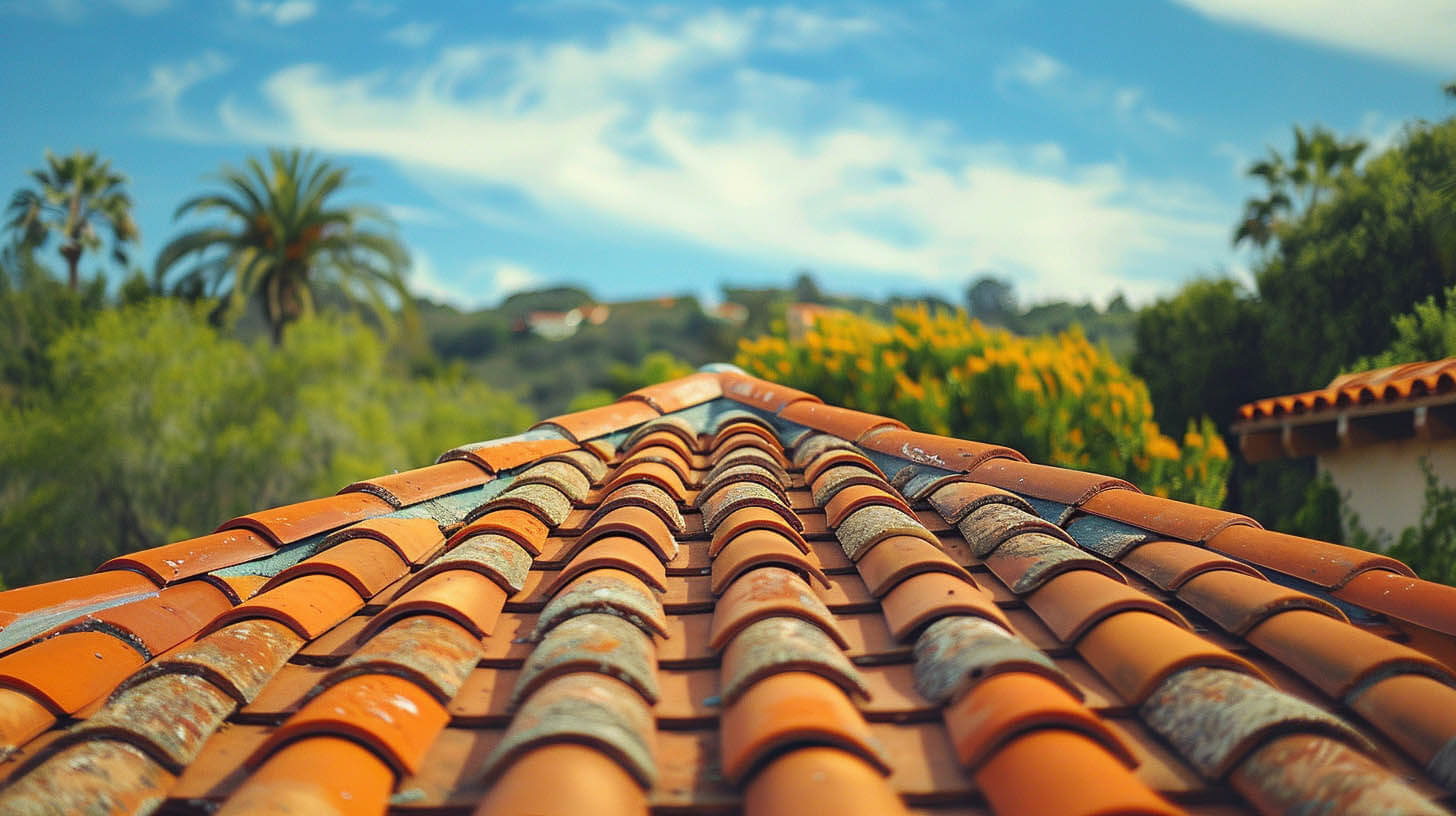
Innovative Roofing Solutions for California Homes
California’s unique climate and environmental considerations have led to the development of innovative roofing solutions for homeowners. These solutions not only provide protection but also offer energy efficiency and environmental benefits. Some popular innovative roofing options include:
- Green roofing options: These roofs incorporate vegetation and plant life, providing insulation, reducing stormwater runoff, and improving air quality.
- Cool roofs: Cool roofs are made with materials that reflect more sunlight and absorb less heat, keeping the home cooler and reducing the need for air conditioning.
- Innovative materials: Advances in technology have led to the development of new roofing materials that are more durable, lightweight, and environmentally friendly.
By considering these innovative roofing solutions, homeowners can not only protect their homes but also contribute to a more sustainable and energy-efficient future.
Green Roofing Options and Their Benefits
Green roofing options offer homeowners in California an environmentally friendly and sustainable roofing solution. These roofs incorporate vegetation and plant life, providing numerous benefits for both the homeowner and the environment. Here are some of the key benefits of green roofing options:
- Improved insulation: Green roofs provide natural insulation, reducing heating and cooling costs and improving energy efficiency.
- Stormwater management: The vegetation on green roofs absorbs rainwater, reducing stormwater runoff and alleviating pressure on local water systems.
- Air quality improvement: Green roofs absorb carbon dioxide and release oxygen, helping to improve air quality and reduce the urban heat island effect.
- Biodiversity support: Green roofs create habitats for birds, bees, and other wildlife, contributing to urban biodiversity and ecosystem health.
Text Table:
|
Benefit |
Description |
|
Improved insulation |
Green roofs provide natural insulation, reducing heating and cooling costs and improving energy efficiency. |
|
Stormwater management |
The vegetation on green roofs absorbs rainwater, reducing stormwater runoff and alleviating pressure on local water systems. |
|
Air quality |
Green roofs absorb carbon dioxide and release oxygen, helping to improve air quality and reduce the urban heat island effect. |
|
Biodiversity support |
Green roofs create habitats for birds, bees, and other wildlife, contributing to urban biodiversity and ecosystem health. |
By choosing green roofing options, homeowners can not only enjoy the aesthetic beauty of a green roof but also contribute to a more sustainable and environmentally friendly future.
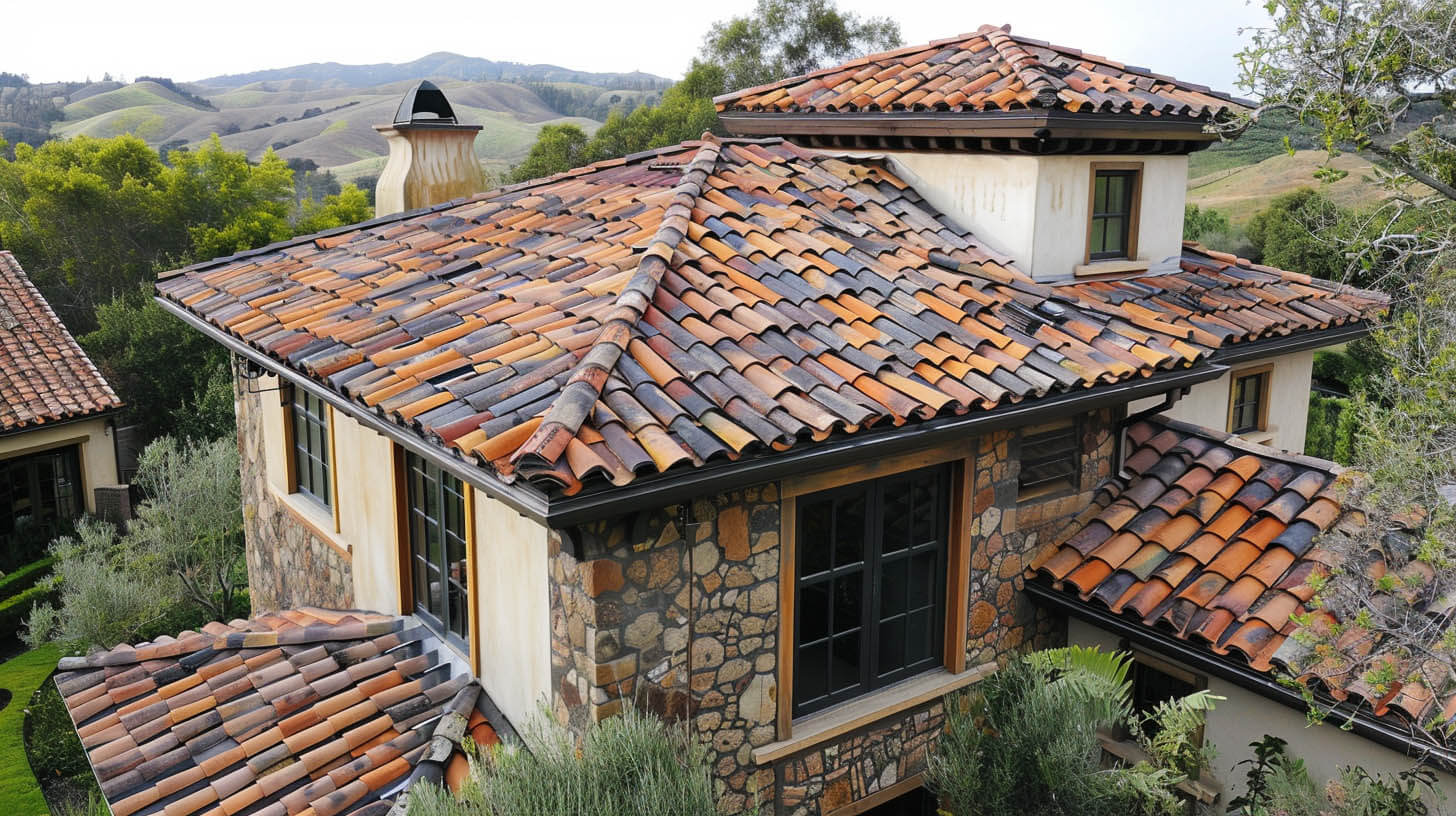
Navigating the Process of Roof Replacement
When the time comes for a roof replacement, homeowners in California need to navigate the process to ensure a smooth and successful project. Here are some key considerations:
- Hiring a professional roofing contractor: It is crucial to work with a professional roofing contractor who is experienced, licensed, and insured. They can guide you through the process, ensure the quality of the installation, and provide valuable advice on choosing the right roofing materials for your home and climate.
- Compliance with local building codes: It is important to adhere to local building codes and regulations when replacing your roof. Your roofing contractor should be familiar with these codes and obtain the necessary permits to ensure a compliant and safe installation.
By following these guidelines and working with a professional roofing contractor, homeowners can navigate the process of roof replacement successfully and ensure a durable and long-lasting roof.
When to Consider a Complete Replacement Over Repair
In some cases, a complete roof replacement is necessary rather than just repair work. Here are some situations where a complete replacement may be more beneficial:
- Severe weather damage: If your roof has sustained significant damage from severe weather events such as storms, hurricanes, or heavy snow, a complete replacement may be necessary to ensure the structural integrity and long-term durability of the roof.
- End of its lifespan: If your roof is nearing the end of its expected lifespan, it may be more cost-effective to opt for a complete replacement rather than investing in frequent repairs. This ensures that the new roof will last for many years without the need for extensive maintenance.
By considering these factors and consulting with a professional roofing contractor, homeowners can make an informed decision about whether a complete roof replacement is necessary.
Selecting the Right Roofing Contractor in San Diego County
Selecting the right roofing contractor is essential for a successful roof replacement project. Here are some factors to consider when choosing a roofing contractor in San Diego County:
- Experience and expertise: Look for a roofing contractor with a proven track record and extensive experience in the industry. They should have expertise in installing roofs that are suitable for the local climate.
- Quality of installation: A quality installation is crucial for the long-term durability and performance of your new roof. Ensure that the roofing contractor uses high-quality materials and follows industry best practices.
- Professionalism and customer service: Choose a roofing contractor who provides excellent customer service, communicates effectively, and responds to any concerns or questions promptly.
- Licensing and insurance: Verify that the roofing contractor is licensed and insured to protect yourself and ensure that the work is done safely and in compliance with local regulations.
By considering these factors and conducting thorough research, homeowners can select the right roofing contractor in San Diego County and ensure a successful roof replacement project.

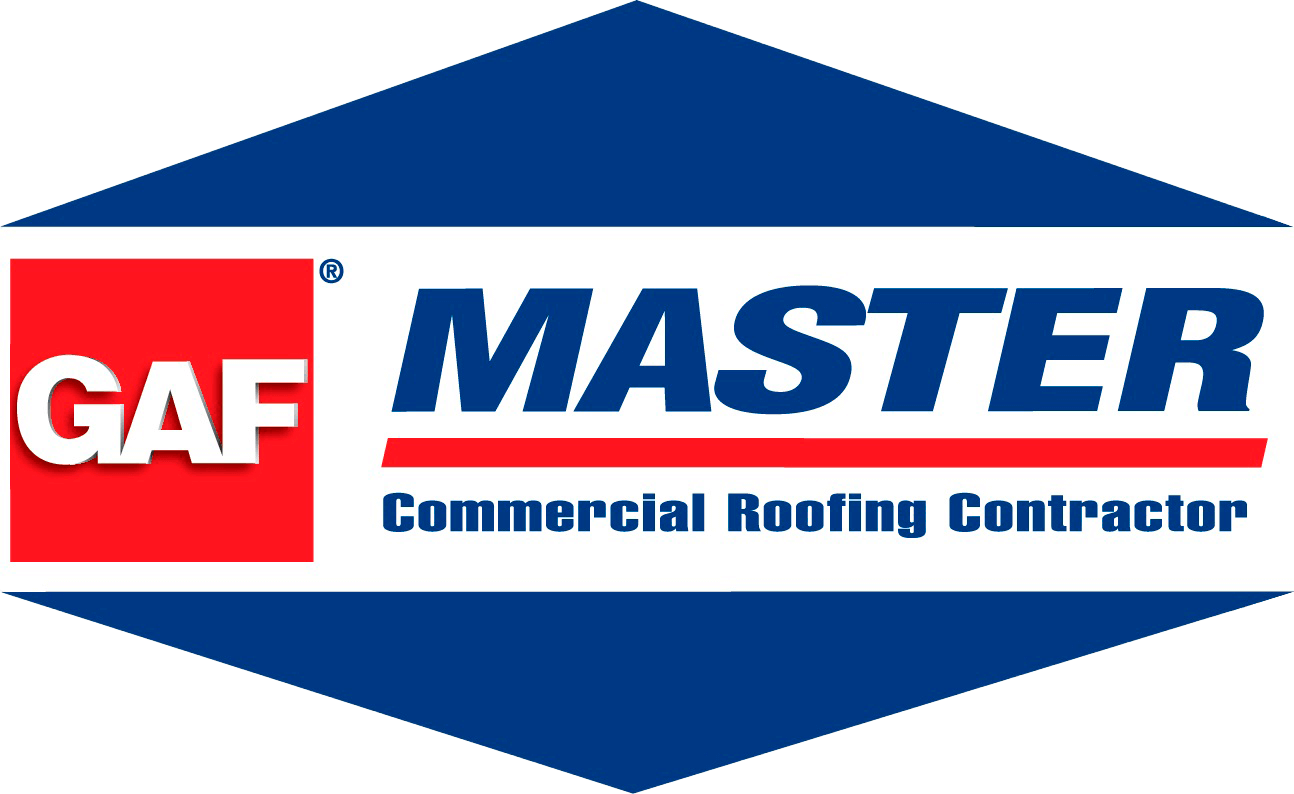


San Diego County Roofing & Solar is qualified as a GAF Master Elite™ contractor, which means we are able to provide our customers with the most inclusive warranties in the roofing business. These warranties give our customers the peace of mind to know that no matter what happens, their roof will be taken care of. Even if customers choose not to purchase these warranties, they know that quality materials are being put on their roof and that they will receive the highest quality workmanship in the business.
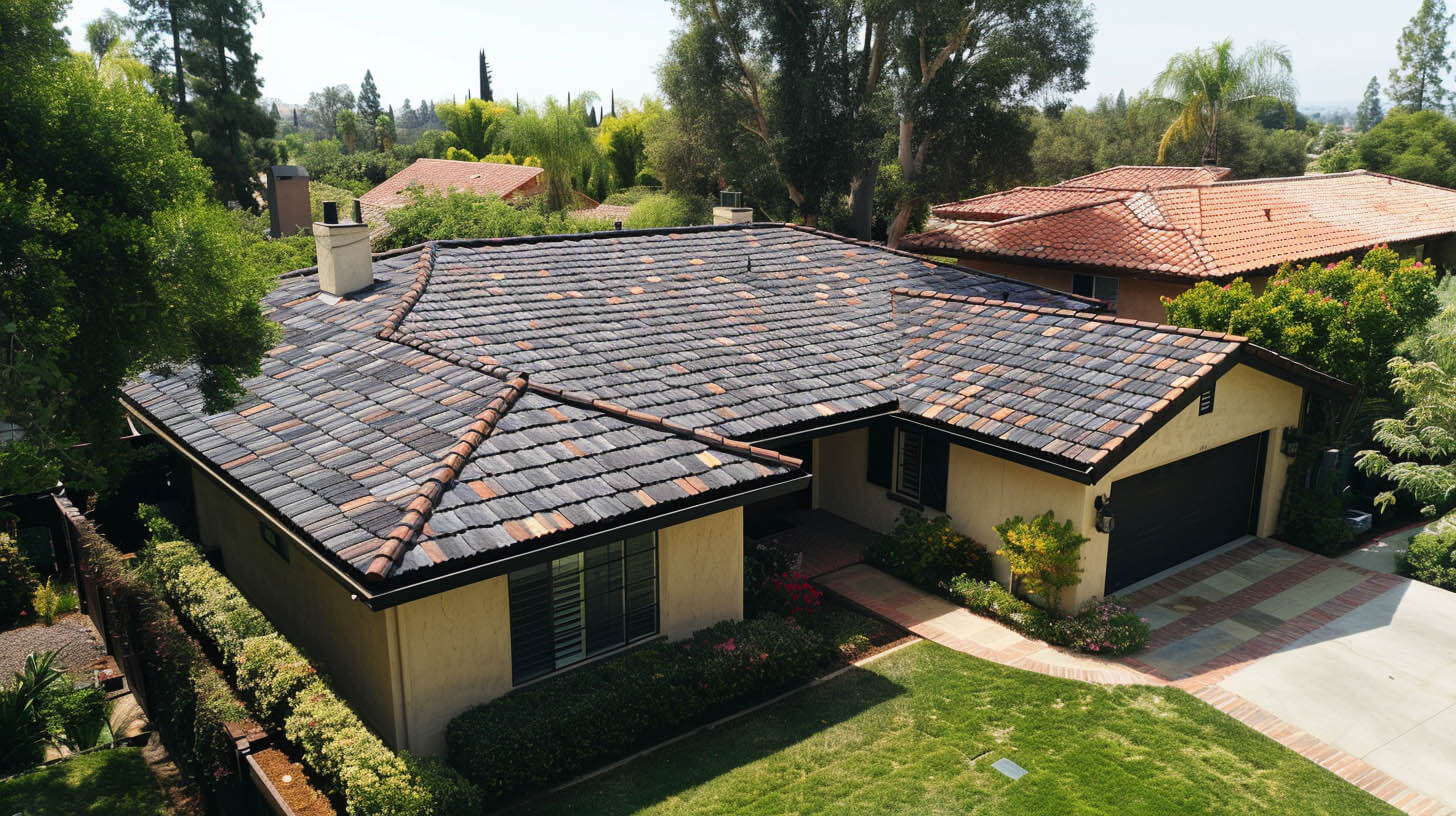
Financial Considerations for Roof Replacement
Replacing a roof is a significant investment, and homeowners in California need to consider the financial aspects of the project. Here are some key considerations:
- Roof replacement cost: The cost of a roof replacement can vary depending on factors such as the size and pitch of the roof, the materials used, and labor costs. On average, homeowners in California can expect to spend between $5,000 and $15,000 on a new roof.
- Financing options: There are various financing options available to help homeowners cover the cost of a roof replacement. These include personal loans, home equity loans, and financing programs offered by roofing contractors.
- Insurance coverage: Check with your insurance provider to understand what coverage is available for roof replacement. Some policies may cover certain types of damage or provide reimbursement for a portion of the replacement cost.
By considering these financial aspects and exploring the available options, homeowners can make informed decisions and plan for the cost of a roof replacement.
Understanding the Cost Factors
The cost of a roof replacement can vary depending on several factors. Here are some key cost factors to consider:
- Labor costs: Labor costs can vary depending on the complexity of the project, the size of the roof, and the level of expertise required. Factors such as the pitch of the roof and the accessibility of the site can also affect labor costs.
- Material costs: The type and quality of roofing materials used will impact the overall cost of the replacement. Higher-end materials may cost more initially but can offer better durability and longevity.
- Pitch of the roof: A steeply pitched roof may require additional safety measures and specialized equipment, which can increase the overall cost of the replacement.
It is important to obtain detailed quotes from multiple roofing contractors and carefully consider these cost factors before making a decision. This will help homeowners understand and plan for the financial aspects of a roof replacement.
Financing Options and Insurance Coverage
When considering a roof replacement, homeowners in California have various financing options and insurance coverage to explore. Here are some key options to consider:
- Insurance coverage: Review your homeowner’s insurance policy to understand what coverage is available for roof replacement. Some policies may cover certain types of damage or provide reimbursement for a portion of the replacement cost.
- Financing programs: Many roofing contractors offer financing programs that allow homeowners to spread out the cost of a roof replacement over time. These programs may offer fixed interest rates and flexible payment options.
- Personal loans: Homeowners can also explore personal loan options from banks or credit unions to help cover the cost of a roof replacement. Personal loans generally offer fixed interest rates and predictable repayment terms.
By understanding the financing options and insurance coverage available, homeowners can make informed decisions and ensure that the cost of a roof replacement is manageable and affordable.
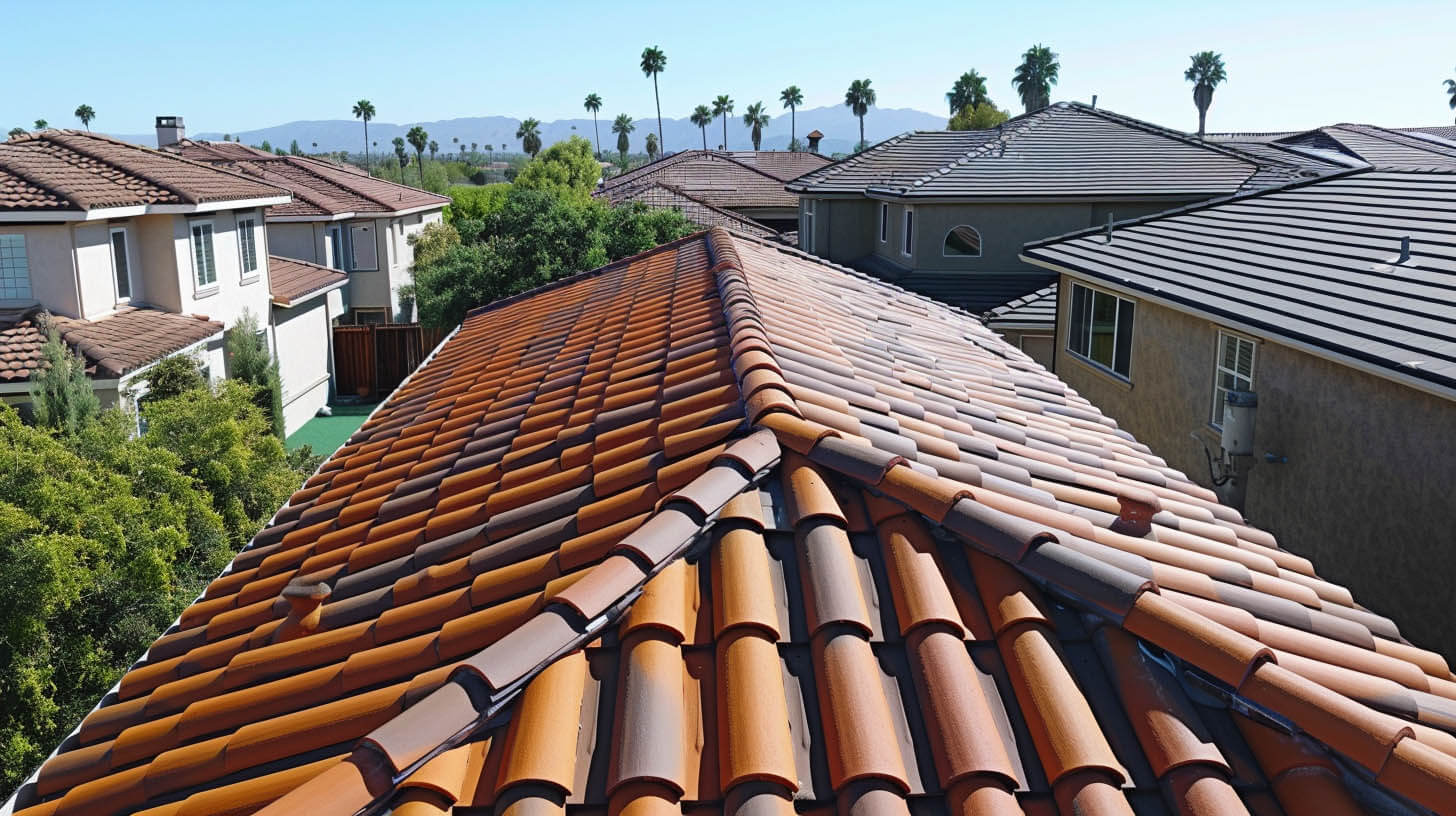
Conclusion
In conclusion, understanding the nuances of roof maintenance in California is crucial for preserving your home’s integrity. Factors like sun exposure and coastal salinity significantly impact roofing materials’ lifespan. Regular inspections, timely repairs, and innovative solutions like reflective shingles can enhance efficiency and durability. To ensure your roof’s longevity, stay vigilant for signs of wear, prioritize preventative maintenance, and engage reputable contractors for replacements. By comprehensively addressing these considerations, you can safeguard your property and make informed decisions regarding roof care in the diverse Californian climate.
Frequently Asked Questions
How often should roofs in San Diego County be inspected?
In San Diego County, it is recommended to have regular roof inspections, especially in a region with a unique climate like Southern California. The local climate, including hot summers and mild winters, can impact the lifespan of the roof. A professional roofer can assess the condition of the roof and identify any potential issues that may require maintenance or replacement. Regular inspections can help catch minor problems before they escalate into major issues, ensuring the longevity of the roof.


